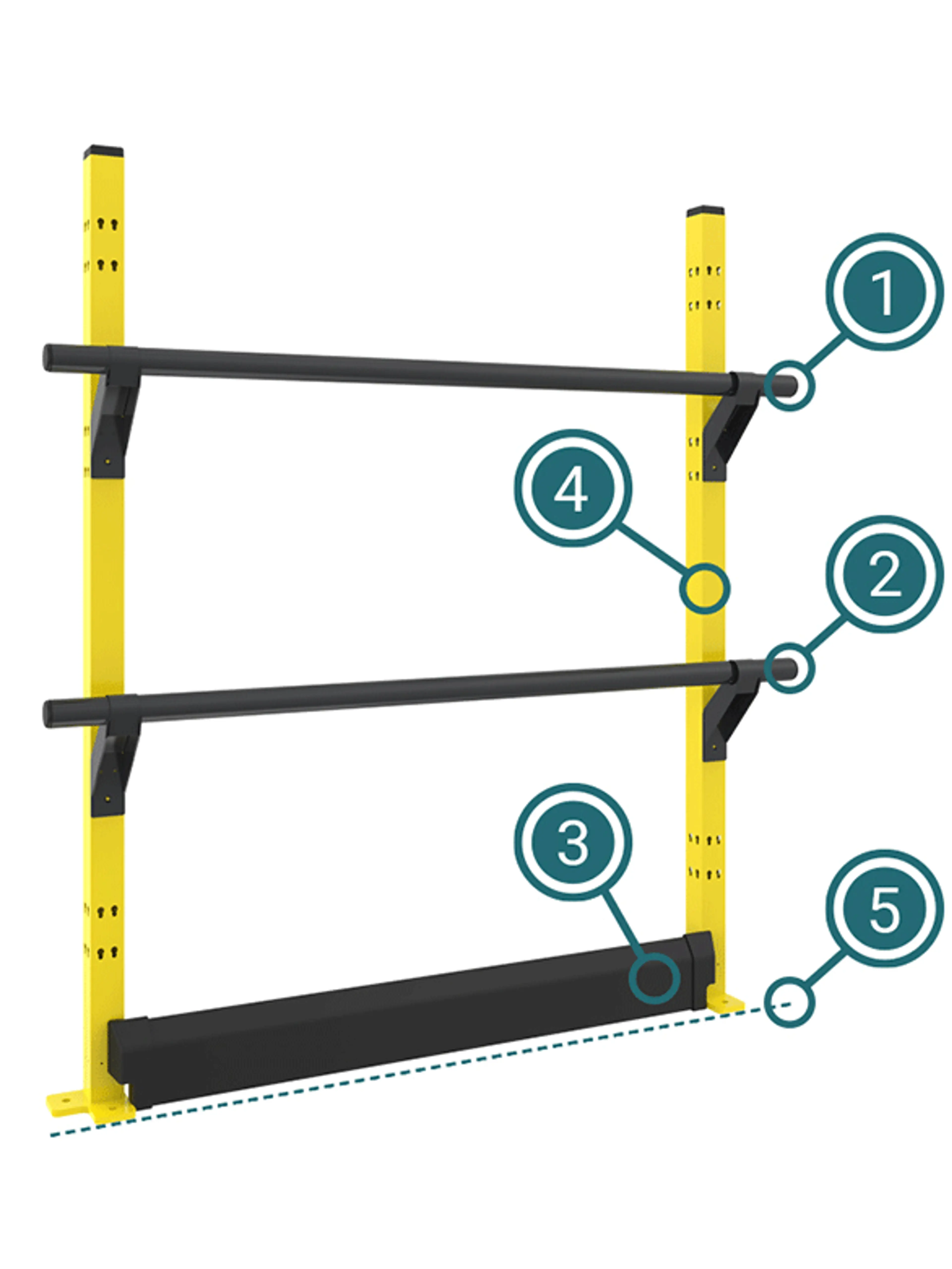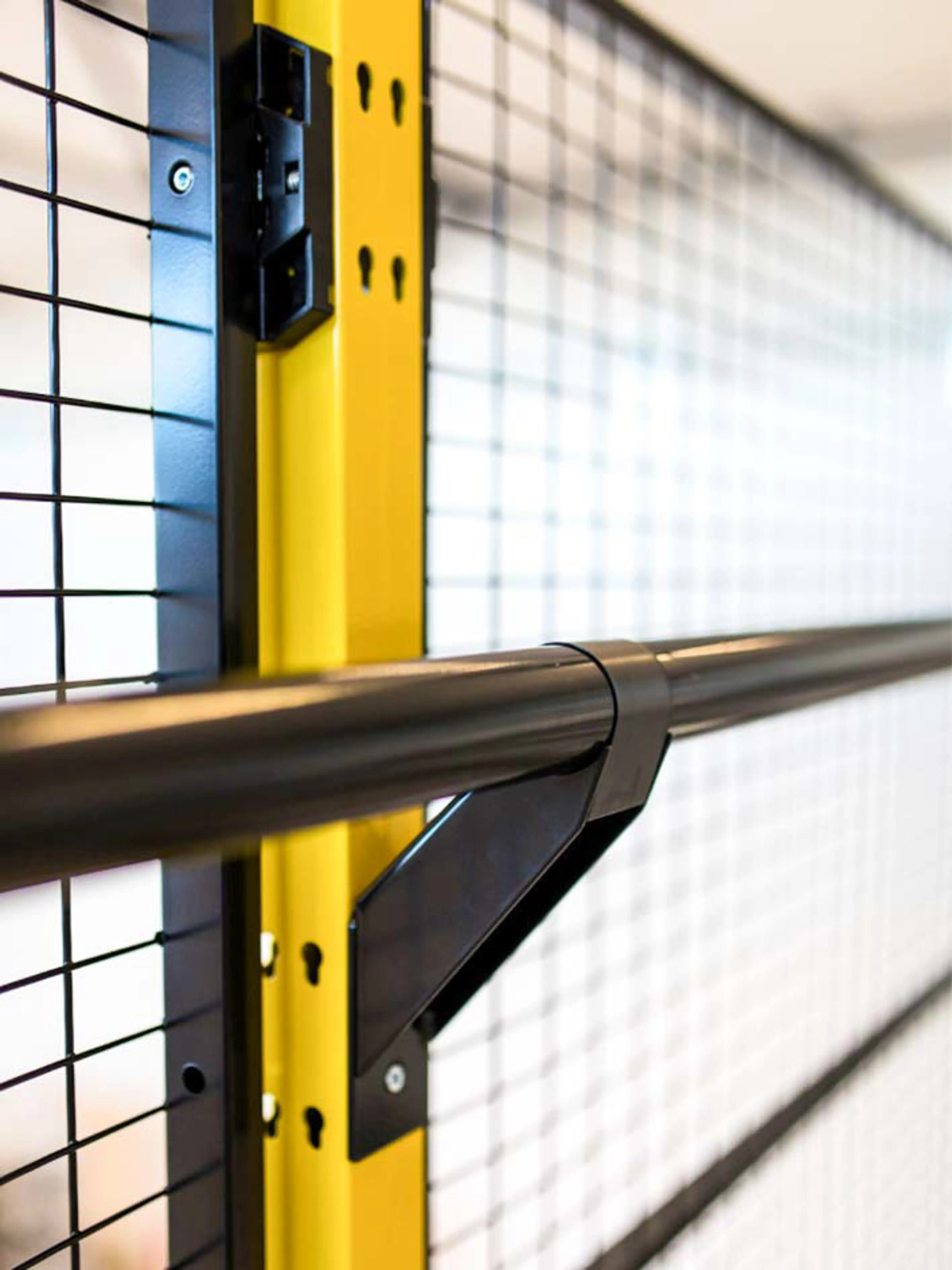Chapter 5.1
Fall Protection
It comes as a surprise to many: fall accidents are among the most common in the industry. Often the consequences are dire. Below we guide you through what actions should be taken and where they should be implemented.
Where is fall protection needed?
From minor to significant and fatal injuries from falls, it is always necessary to have adequate fall protection solutions in place to prevent accidents from happening.
When the height at a fall edge exceeds 500 mm, guard railing must be installed. The only exception is if there is something that can serve as fall protection within 180 mm from the fall edge such as a wall or machine surface etc. However, the alternative fall protection must be at least 1100 mm high and strong enough to prevent a person from falling.
The fall protection must have a height of at least 1100 mm. If you install guard railing, then it must also have a handrail (1) and knee rail (2). These prevent people from falling through the railing. The knee rail is not needed if there is sufficiently strong panelling. But never leave the handrail away, as people need and often want something to hold onto when walking along a fall edge. And don’t forget the kick plate (3), which holds back objects that might otherwise fall to a workplace or passage below.
- Hand rail - allows people to hold onto something when walking at a height
- Knee rail - prevents falling through the fall protection
- Kick plate - prevents slipping underneath the knee rail and keeps objects from dropping across the edge
- Post
- Walking line

When to use fall protection
Machinery manufacturers tend to think that the installation of guard railing is the responsibility of the customer operating the machine.
Researching the topic in regulations and standards, you will find that this is a misconception. It is the machine manufacturer's responsibility to ensure protection if a work position or maintenance location poses a fall risk. Stairs, ladders and guard railing will then have to be integrated into the machine. In large machinery systems, a combination of fixed guards preventing access to moving parts and fall protection is often needed.
Standards met by the fall protection system X-Rail:
- DIN EN ISO 14122-3:2016
- BS 6180:2011
- AS 1657:2018
- OSHA 1910.29
Aside from machinery, there are many other places in factory buildings and warehouses that may need guard railing:
- Mezzanine floors
- Loading bays
- Walkways and work platforms
In addition to the minimum height of guard railing, regulations and standards also define the maximum spacing between posts, gaps allowed in the handrail, and the specs for stability testing. Besides the international standard (EN) ISO 14122-3, there are numerous national building standards for guard railing. Always check for additional rules that apply.

Learn the key factors to consider when implementing fall protection in this expert interview. Russ Harris shares his insights with Stefan Axelsson and Andreas Gotemark, offering practical advice to enhance safety and compliance in your workplace. The interview starts at 2:00 minutes.